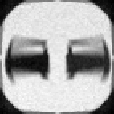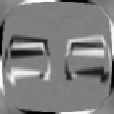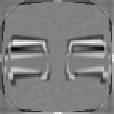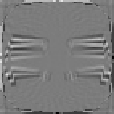Information Technology Reference
In-Depth Information
Fig. 7.
First five tensors
T
for the “No pass” sign (upper row), and the corresponding five
core tensors
Z
(lower row)
a b
Fig. 8.
The data-base of prototype exemplars from which the rotated and noisy patterns were
constructed from which the tensors are composed (a). Accuracy rate of the pictogram
classification system in respect to the number of
N
base tensors in (12) (b).
6 Conclusions
In this paper a software framework for rigid object classification is presented which
was applied to the task of road signs recognition. The classification method relies on
the Higher-Order Singular Value Decomposition of the deformable prototype tensors.
These, in turn, are built for each pictogram from deformable versions of its real
prototypes. The group of deformations contains only rotations since small shifts are
well compensated without explicit training. Additionally, this way prepared
prototypes were endowed with the Gaussian noise to enhance robustness. The method
was tested with images containing real traffic scenes. Compared to other solutions it
can be characterized as showing the highest accuracy and recognition speed. The
method is also resistant to the small projective deformations of the observed signs, as












Search WWH ::

Custom Search